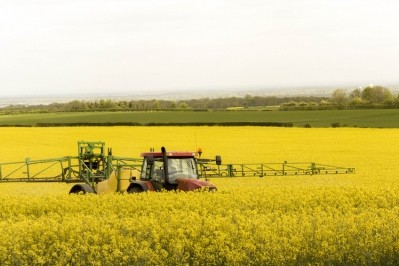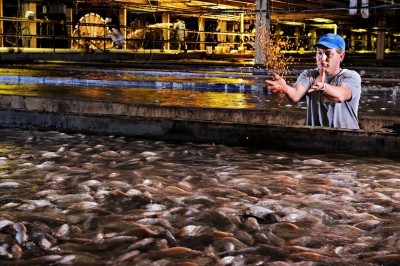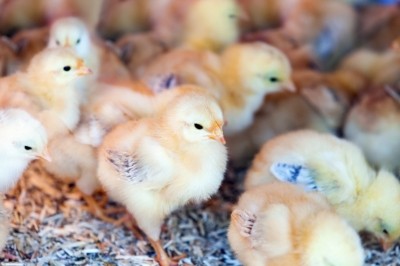EFSA finds lecithin safe for animal feed use

The EFSA Panel on Additives and Products or Substances used in Animal Feed (FEEDAP) provided a scientific opinion in regards to the “safety and efficacy” of the feed ingredient earlier this month.
The review was asked for by the European Commission after receiving a request for re-evaluation of the feed product from the Europe Lecithins Manufacturers’ Association when used in animal species technical and functional group categories including as emulsifiers, stabilizers, thickeners and gelling agents, said the EFSA. “This application concerns the re-evaluation of lecithins as technological feed additives when used as a feed additive (category: technological; functional group: (c) emulsifiers) for all animal species,” it added.
The plant-based product was found not to pose a risk to consumers, said the EFSA in the report. And, no maximum content level was established.
Lecithin details
Lecithin feed additives being assessed included those made from rapeseed, sunflower and soybeans and other plant extracts, said the EFSA panel members in the report.
The supplement is generated as regular liquid lecithins, hydrolyzed liquid lecithins and de-oiled lecithin powder, they said. “Lecithins are usually phospholipids, composed of phosphoric acid with choline (or ethanolamine, inositol, serine or hydrogen, in phosphatidic acid), glycerol and one or two fatty acids,” they added.
Regular liquid lecithin is produced using mechanical or solvent extraction, the authority said. Additional processing can be used to create alternative forms.
Report details
The forms of lectins reviewed by the panel met the standard for food additive use, meaning they met requirements for loss on drying, percentage of acetone-insoluble matter and toluene-insoluble matter, amount of potassium hydroxide(KOH)/g as acid value and peroxide value.
A series of product batches, 25 of regular liquid lecithins, seven of hydrolyzed liquid lecithins and 12 of de-oiled lecithin powder were checked for impurities and mycotoxin levels, panel members said. However, no concerns were found for amounts of either present in the feed additive.
Microbial contamination from coliforms and salmonella also was assessed, as were pesticide residue and residual solvent concentration, they said.
“To determine the shelf-life of lecithins in ambient conditions, four batches of regular liquid lecithins and three batches of de-oiled lecithins were stored for 36 months, and one batch of hydrolyzed liquid lecithins stored for 24 months,” they said. “All samples were analyzed for moisture, acetone-insoluble matter, acid value and peroxide value; the regular and hydrolyzed liquid lecithins, in addition, for toluene-insoluble matter and aerobic bacteria and Salmonella spp. count; the hydrolyzed one also for phospholipid composition.”
But, no alterations from initial values were found after the storage period, said panel members in the report. “As long as lecithins serve their technological function as emulsifier, a further demonstration of homogeneous mixing is not considered essential,” they added.
The additive is available for use in feed for all animal species, and no minimum or maximum content was established, they said.
“However, the applicant proposed use levels of 1,000–10,000 mg/kg complete feeding stuffs for all animal species,” said the panel. “Only for shrimps the highest proposed inclusion level corresponds to 20,000 mg/kg complete feed.”
The safety assessments done were based on published literature, the panel said. Toxicological studies assessed reported the feed additive to have low toxicity.
When used in balanced diets and typical feeding conditions, lecithins are not expected to generate intolerance in animals, they said. Selected research studies also suggested that the additive may be better than oils in dairy cattle diets and that phosphatidylcholine may be necessary in the diets of fish and crustaceans.
The additive was not found to present a risk for consumers or act as an irritant to skin or eyes, they said. No environmental damage is found from their use and the product is through to be useful as an emulsifier.
“The FEEDAP Panel considers that lecithins are safe for all target species, and that setting a maximum content for lecithins is not considered necessary,” the panel said. “It is noteworthy that fish and crustaceans may have a nutrient requirement for phospholipids.”








